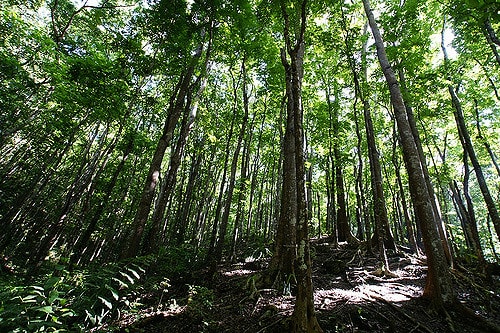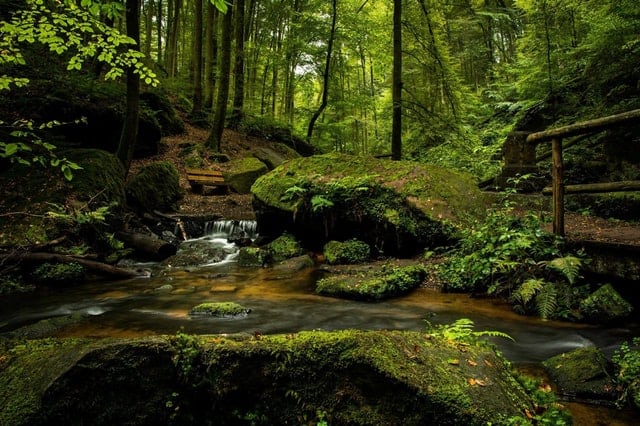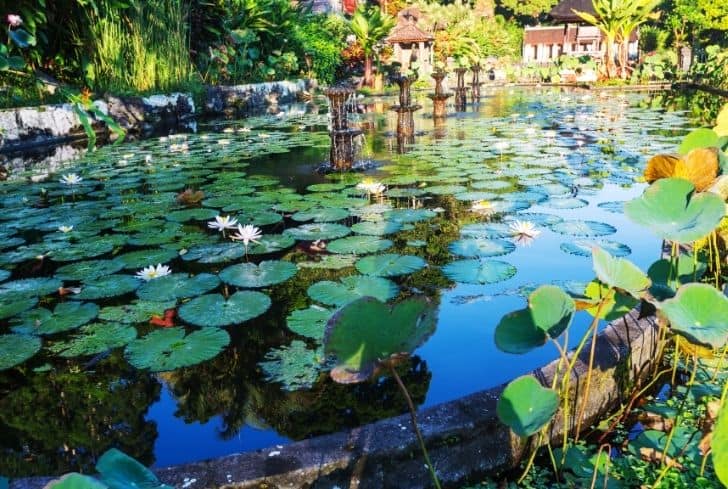Alpine Biome: Climate, Location, Temperature, Plants, and Animals

An alpine biome describes an ecosystem that doesn’t contain trees due to its high altitude. These biomes are found in mountainous regions across the globe. Their elevation normally ranges between 10,000 feet (3,000 meters) and the area where a mountain’s snow line begins.
Alpine biomes are home to only about 200 plant species, as their dynamic conditions are not favorable for plant growth. These regions are characterized by cold and windy conditions, as well as harsh sunlight. Moreover, there’s a minimal supply of carbon dioxide for photosynthesis at high altitudes.
Let’s take a deeper look at the alpine biome, including its climate, and geographical location, as well as the various flora and fauna you can find there.
Alpine Biome Climate
The climate of alpine biomes is somewhat dynamic. You can’t describe the environment of this kind of biome using a simple climate scheme. It is often characterized by extreme temperatures and low humidity. This is due to their high elevation and low precipitation.
Temperatures usually drop by about 10oC for every 1000 meters as you go up a mountain. The biome experiences a long, cold winter season, lasting about nine months. Summer temperatures usually range from 40 to 60oF. However, these temperatures can typically drop from warm to freezing within a day.
Precipitation also varies considerably in alpine biomes, but they’re usually fairly dry. In fact, the regions receive about one foot (30 cm) of precipitation annually. Nevertheless, snow may remain on the ground for an extended period, thanks to the consistently low temperatures.
Temperature
Temperatures in alpine biomes are very cool, even during the summer months, when temperatures normally reach just above freezing. Due to the high altitude, these areas can be greatly affected by the phenomenon known as altitude sickness, which occurs when the human body is not properly acclimatized to high altitudes.
Temperatures inside alpine biomes change with the seasons, as well. During the winter, temperatures can drop well below freezing, while in the summer months, they can rise to just above freezing.
Precipitation
Alpine biomes are naturally dry areas and are located in areas with high precipitation throughout the year. However, a majority of precipitation falls during the winter season in these regions, as well. In fact, the majority of the rain and snowfall accumulates during December, January, and February.
Due to the high elevation of these areas, humidity is low. The low humidity makes it difficult for plants to retain water, which is an important fact to remember when gardening in an alpine biome.
Location
Alpine biomes occur at high altitudes within any latitude worldwide. Parts of montane grassland and shrubland ecosystems across the globe include alpine biomes. Extensive areas of alpine biomes are found in the following regions:
- The Himalayas in Asia
- The Scottish Highlands
- The Scandinavian Mountains
- American Cordillera in North and South America
- The Rift Mountains of Africa
- Carpathian and Pyrenees Mountains in European
- The Caucasus Mountains
- A substantial extent of the Tibetan Plateau
Alpine biomes occupy summits and slopes of high mountains. It can also be found in high-mountain ridges above timberline. The treeline normally occurs at high altitudes on warmer equator-facing slopes.
Because alpine regions are found only on mountains, the biome is characterized by a rugged and wrecked landscape, with rock-strewn, snowcapped peaks, and cliffs. Other remarkable features include talus slopes.
It’s worth noting that some areas of this biome feature gently rolling to virtually flat terrain. Across various locations, the treeling rises about 75 meters as you move one degree south from 70oN to 50oN, and 130 meters a degree as you move from 50oN to 30oN. The treeline virtually remains constant between 30oN and 20oS, at 3,500 meters to 4,000 meters.
Soil in Alpine Biome
The soil found in alpine biomes is usually nutrient-poor and acidic. It is mainly made up of rocks and minerals that have been broken down by bacteria. In the winter months, the soil freezes and becomes covered in a layer of frost. The frost melts during the summer months, turning the soil a dark shade of brown. You can improve the soil in your alpine garden by adding compost, as well as other types of soil amendments. You can also add organic mulch to help keep the soil moist and prevent weeds from growing.
Types of Alpine Soil
The soil in an alpine biome is generally divided into two categories:
- Rockland
- Exposed soil
Rockland is soil that is found under a large number of rocks. This soil is typically thin and poor in nutrients, with little organic matter. Rockland is found on steep and exposed slopes.
Exposed soil is found on relatively flat ground close to rivers and streams, and is often covered by large amounts of rocks. This soil is thin and poor in nutrients and organic matter.
Characteristics of Alpine Soil
- The soil in an alpine biome is thin and rocky, with a high concentration of minerals and little organic matter.
- It is typically acidic due to the large amounts of decaying grass and shrubbery in this biome.
- Alpine soil is usually a reddish-brown color due to the large amounts of iron in it.
- Due to the thinness of this soil and the fact that it is covered by rocks and boulders for much of the year, it cannot be cultivated as in other biomes.
- Alpine soil is also naturally low in nutrients, particularly nitrogen and phosphorus, which are essential for plant growth.
- Because the soil in an alpine biome is thin and rocky, it can be easily eroded. This soil erosion is the main reason why the soil in this biome is so thin.
The rocks and boulders that rest above this soil protect it from heavy rainfall, which can cause soil erosion.
Importance of Soil in an Alpine Biome
Soil is an important part of any ecosystem, and the alpine biome is no exception. This thin layer acts as a habitat for many organisms, while also storing water and nutrients. It also acts as a sponge to absorb excess water after heavy rainfall. Without soil, the alpine environment would be nothing more than a barren landscape.
The soil in an alpine biome is not very fertile, meaning that plants and crops have a hard time growing in it. However, plants in this ecosystem have adapted to the thin and rocky soil. They have developed a root system that is thick, long, and has a large network. This allows these plants to tap into what little nutrients are in the soil.
Plants Found in the Alpine Biome
The alpine biome is characterized by unfavorable conditions for plants to thrive, including strong winds, unfavorably low temperatures, low carbon dioxide levels, and strong sunlight. With low carbon dioxide, plants have a hard time carrying out photosynthesis.
As a result of the windy weather, alpine biomes are characterized by small groundcover plants. These plants take longer to grow and reproduce. They shield themselves from the cold and windy conditions by staying as close to the ground as possible.
Moreover, these plants decompose slowly after they die, thanks to the low temperatures. This results in poor soil conditions. Most plants that are found in alpine biomes are adapted to thrive in rocky and sandy soil.
You should also realize that plants in the alpine biome have an anti-freeze chemical, which coats and protects the plants from low temperatures. This ensures the plants don’t die from freezing. They also have specialized root systems.
The roots don’t grow vertically downward but rather spread and grow horizontally. This kind of root growth prevents the roots from getting to the permafrost soil, which would result in the death of the plants due to water loss.
It’s also worth noting that alpine plants have limited transpiration. Transpiration is the process by which plants lose water through their leaves. Limited transpiration, therefore, ensures that alpine plants don’t dry out as a result of excessive water loss. These plants need all the water they can get in a bid to survive the cold, dry alpine conditions.
Plants That Thrive in Alpine Biome
Here are some of the plants that thrive in alpine biomes:
- Beargrass – Bear Grass looks like grass and thrives in open forests and meadows at sub-alpine and low alpine elevations. It provides food and is home to an array of wildlife species—from bees and flies to rodents, bears, deer, and elk.
- Moss campion – Moss Campion is a member of the Pink family. It is greatly adapted to growing in the lower, and sometimes higher Alpine areas.
- Pygmy Bitterroot – A tiny beauty of the alpine region, pygmy bitterroot or Lewisia pygmaea features tiny flowers that range from almost white to a dark magenta which adds immense charm to a high altitude hike.
- Wild potato – The wild potato is a relative of the agricultural potato, and is prevalent in the alpine biome of the Andes Mountains.
- Bristlecone pine – The bristlecone pine is one of the most interesting plants you can find in the alpine biome. It can be found in scattered, arid mountain areas of western states of the U.S., including Californian and Colorado.
However, they are more prevalent in the Ancient Bristlecone Pine Forest in California’s White Mountains. While bristlecone pine can live for over 4,000 years, it can only grow to up to 60 feet tall.
Animals Found in the Alpine Biome
Animals that live in the alpine biome should be adapted to contend with two types of problems:
- The cold
- High UV light exposure
This region is home to many warm-blooded animals and a couple of insect species. But how do these animals deal with the cold? They normally hibernate, move to warmer regions, or insulate their bodies with layers of fur and fat.
Moreover, these animals normally have short legs, ears, and tails, which helps in minimizing heat loss. They also boast larger lungs and a higher number of blood cells. The blood of alpine animals can work with lower oxygen levels that are typical of high elevations.
Here are some of the animals you can find in the alpine biome:
- Elk
- Sheep
- Mountain goats
- Snow leopard
- Alpaca
- Yak
- Butterflies
- Grasshoppers
- Beetles
- Chinchilla
- Ptarmigan bird
- Snowshoe rabbit
- Himalayan Tahr
- Marmot
Chinchilla is one of the most interesting animals in the alpine biome. Chinchillas can be found in the Andes alpine regions. But that doesn’t mean they are easy to find.
They feed on roots, plants, and grasses. These animals were on the verge of becoming extinct in the 1940s as they were rampantly hunted for their soft, attractive fur, which was used to make coats. Following the threat of extinction, chinchillas were declared an endangered species, and laws were enacted to protect them from hunting.
Threats To Alpine Biomes
Humans are destroying alpine ecosystems by creating ski slopes on hills that plants and animals call home. Airborne pollution, such as acid rain, is also a huge threat to alpine habitats. Acid rains have destroyed the productivity of many mountain lakes, which usually have a marginal buffering capacity. Nonetheless, global warming is arguably the biggest threat to alpine biomes.
Some Fun facts About Alpine Biomes
- Alpine biomes receive a lot of sunlight, making them feel very hot in the summer months. However, it can also make them very cold in the winter.
- Alpine biomes can experience wide fluctuations in daily and yearly temperatures. The average annual temperature is between -2°C and 4°C (35°F and 39°F).
- Alpine biomes are home to large amounts of wildlife, including birds, small mammals, reptiles, and insects.
- Alpine biomes are home to many species of wildflowers, including alpine wildflowers.
- Alpine biomes are highly susceptible to wildfires, as they are often dry and don’t receive much precipitation.
Conclusion
The alpine biome is a high-elevation ecosystem characterized by cold temperatures, low humidity, and low precipitation. They are extremely unique ecosystems, as they receive very little sunlight and have very cold temperatures. They are also areas where very little precipitation occurs. It is home to many unique plant and animal species, many of which are found nowhere else.
Alpine biomes occur in mountain regions around the world, where they are divided into sub-biomes based on their topographical features. These biomes are a great place to visit during the winter season, as they are very picturesque during that time of year.
If you are interested in gardening and would like to garden in an alpine biome, you need to make sure to water your plants well and provide them with proper soil, as well as plant fertilizer.






